Article – Another Year-End Tax Act Brings Changes for Plan Sponsors (and Their Service Providers) v2
Publication: Journal of Pension Benefits
Date/Volume/Issue: Volume 27, Number 3, Spring 2020
Another Year-End Tax Act Brings Changes for Plan Sponsors (and Their Service Providers)
Ilene H. Ferenczy, Esq. and Elizabeth Thomas Dold, Esq.
This column includes a summary of the key provisions for defined benefit and defined contribution plans from the Further Consolidated Appropriations Act of 2020. Notably, a number of the provisions are effective January 1, 2020, providing an opportunity to take advantage of these provisions in the near term, or otherwise require system changes to be made to comply with any mandatory changes.
Elizabeth Thomas Dold is a principal attorney at Groom Law Group, Chartered in Washington, DC. For nearly 20 years, her work has focused on employee benefits and compensation matters, including employment taxes and related reporting and withholding requirements. She regularly advises Fortune 500 companies (including corporate and tax-exempt employers, financial institutions, and third-party administrators) on plan qualification and employment tax issues. Ms. Dold is a past Chairperson of the Information Reporting Program Advisory Committee and a former adjunct professor at Georgetown Law Center.
Ilene H. Ferenczy, JD, APA, CPC, is the Managing Partner of Ferenczy Benefits Law Center in Atlanta, GA. Ms. Ferenczy began her experience in the pension industry as a TPA for 10 years and has been a benefits attorney for over 30 years. She is the author of three books, three textbooks, and over 100 articles on benefits issues and has received Educator of the Year awards from both NIPA and ASPPA. She sits on the governing Boards of both NIPA and the Pension Education Council of Atlanta, and is a former member of ASPPA’s Leadership Council. Ms. Ferenczy is the Co-Editor-in-Chief of the Journal of Pension Benefits.
The Further Consolidated Appropriations Act of 2020 (FCAA), which was signed into law on December 20, 2019, contains a number of pension provisions from the Setting Every Community Up for Retirement Enhancement Act of 2019 (SECURE Act). [H.R. 1994] The SECURE Act has a 10-year history, and is intended to expand coverage for plan participants, facilitating lifetime savings and access to retirement funds. Of course, changes take time to implement properly, and some provisions of SECURE may provide opportunities and some may bring on additional challenges and expenses in maintaining a qualified plan.
A summary of the key provisions for defined benefit and defined contribution plans is set forth at the end of this column, via a side-by-side chart of the initial provisions, starting at page 41, and the changes. Notably, a number of the provisions are effective January 1, 2020, providing an opportunity to take advantage of these provisions in the near term, or otherwise require system changes to be made to comply with any mandatory changes.
Further Guidance Eagerly Awaited
Many of the fine points of the changes made by the FCAA are left to the Department of Labor (DOL) and the Internal Revenue Service (IRS) to determine through regulation or other such guidance. Many of these open questions are outlined in the chart below. While some of the provisions have delayed effective dates (such as the rules for long-term part-time employees, which do not need to take practical effect until 2024), many of the changes are effective in 2020 (or even retroactively). Therefore, guidance is anxiously awaited, and the pressure is on the regulatory agencies to be prompt in issuing the needed information (and, ideally, transition relief).
The FCAA also takes significant forward steps in encouraging the use of multiple employer plans, which have long been seen by those in government as a viable way to expand access to retirement plans, particularly to employees of small business (now that the lack of nexus hurdle has been overcome). Whether this turns out to be the case is yet to be seen. While economies of scale sound like a marvelous way to reduce costs for smaller plans, it is not entirely clear whether the complexities of administering plans with so many moving parts will cause these programs to be as successful as Congress anticipates. Nonetheless, many plan sponsors, as well as many in the industry, look with some level of excitement and trepidation to the changes that these structures may bring with them.
Action Steps
As we await IRS and DOL guidance on these various provisions, plan sponsors and record keepers should review these provisions and consider design changes to implement the optional provisions, and to take steps as soon as possible to be in operational compliance with the mandatory required minimum distribution (RMD) provisions (both lifetime and death changes).
For the RMD changes, which are already effective, this requires updating distribution packages, distribution forms, reviewing beneficiary designations, updating RMD policies and procedures, and potential corrective action if the RMD rules are violated. (Note that this may require two sets of procedures, as some participants/beneficiaries may be grandfathered under the old rules.) For example, if amounts are distributed during the participant’s lifetime that are not RMD amounts under the new rules, then the amount may be eligible for rollover treatment, subject to 20 percent mandatory withholding and Section 402(f) notice obligations. If those rules are violated, it is possible that Revenue Procedure 2019-19 (the Employee Plans Compliance Resolution System (EPCRS) procedure) would need to be considered to correct potential plan overpayments (although, ideally, transition relief will be provided).
While the FCAA gives anti-cutback relief and an extended time for amendment, there may be situations where earlier amendments are desirable to clarify the operational aspects of a provision. It will be interesting to see how attorneys and document providers
react to these needs, particularly where we anticipate additional IRS guidance (including model/sample amendments). And, it is reassuring to know that the remedial amendment period generally provides an opportunity to repair problems without creating qualification failures that require EPCRS remediation.
Conclusion
Those of us who have been in the benefits industry for a long time have seen new legislation come and go and have experienced the periods of chaos that generally follow as we try to synthesize, plan, and accommodate the new rules for our clients’ plans. The FCAA is no different (although the lead time of less than two weeks over the holidays makes this one particularly challenging). As always, we live in interesting times.




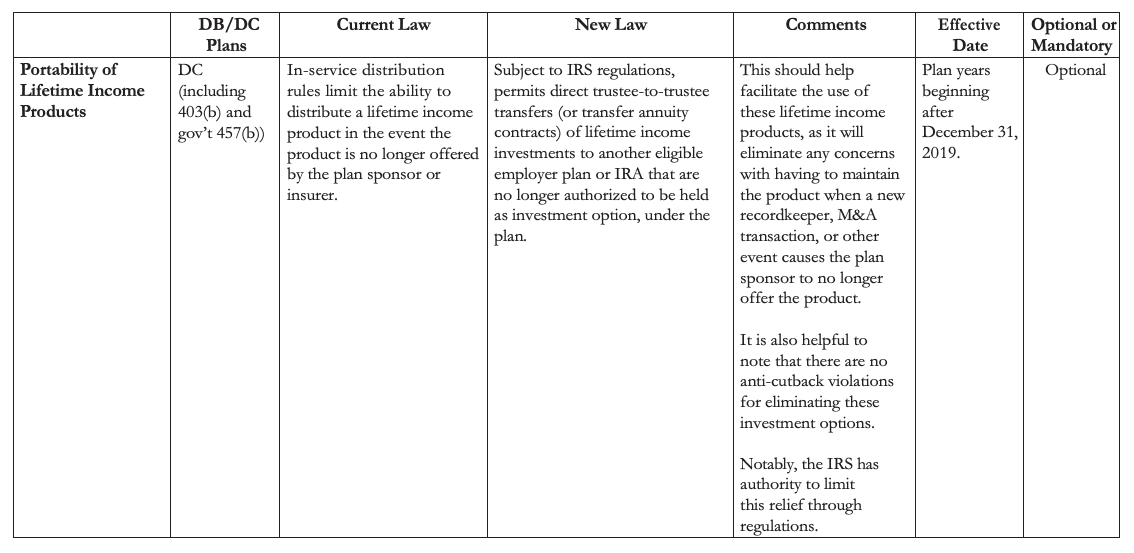
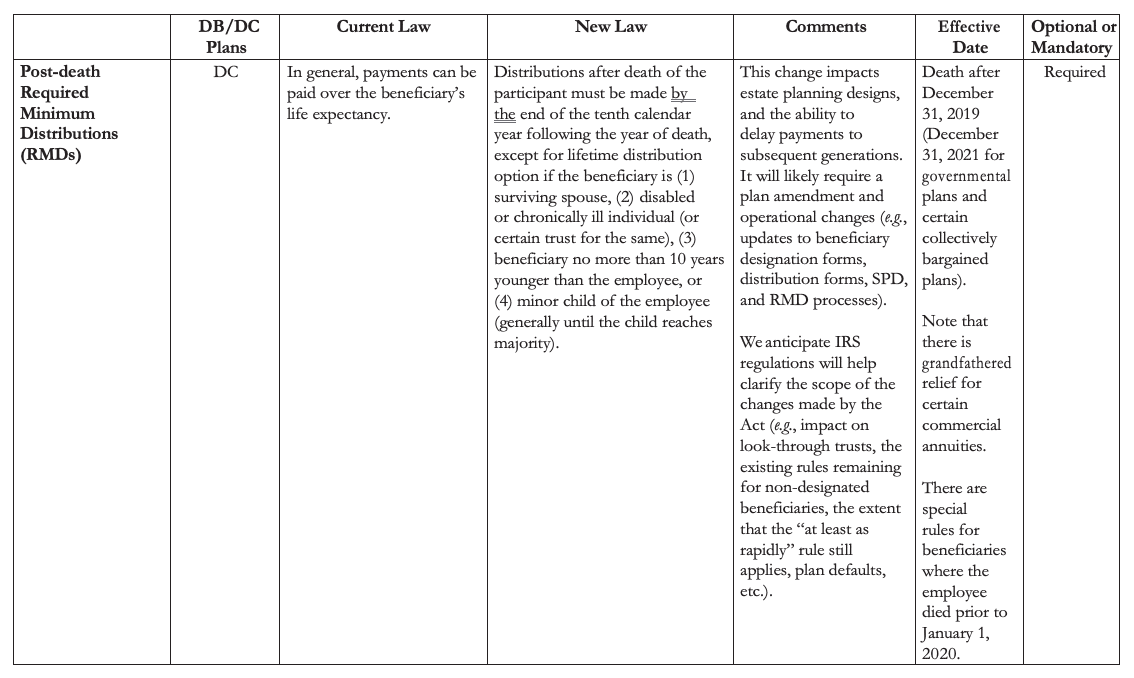

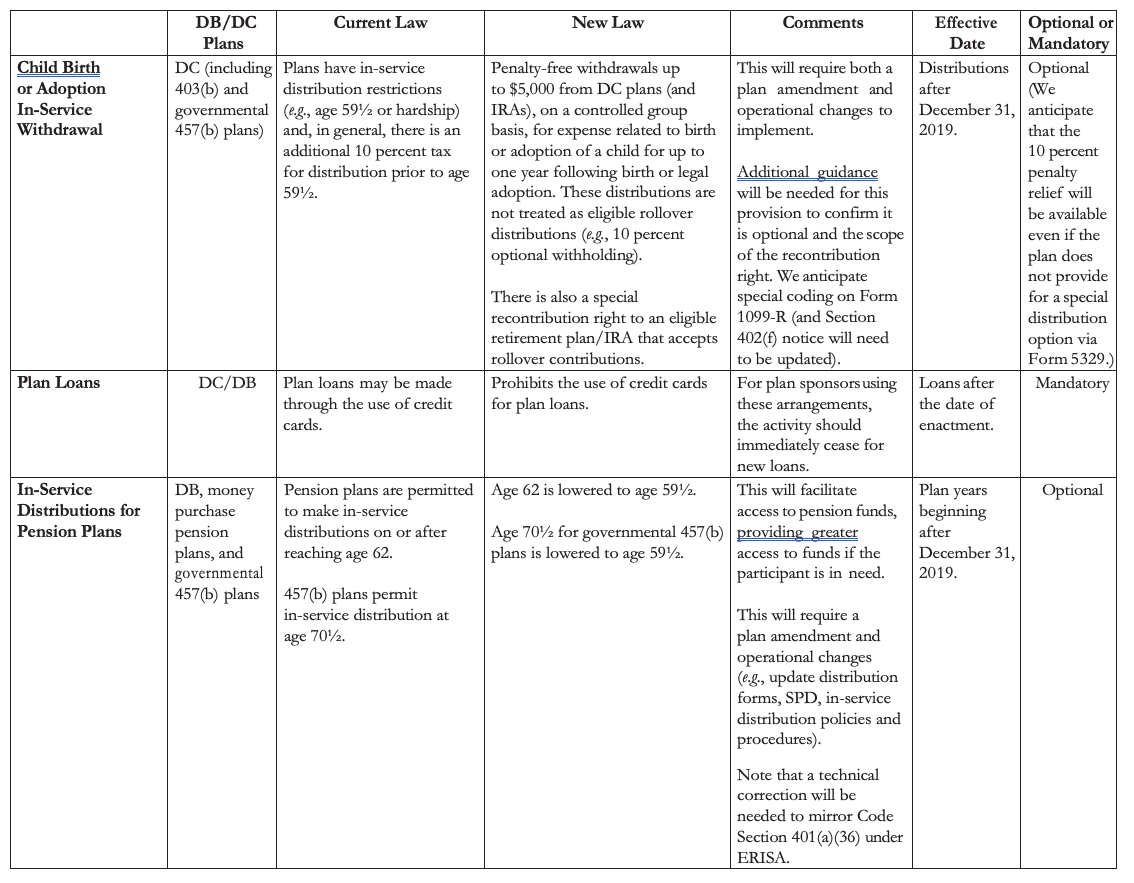
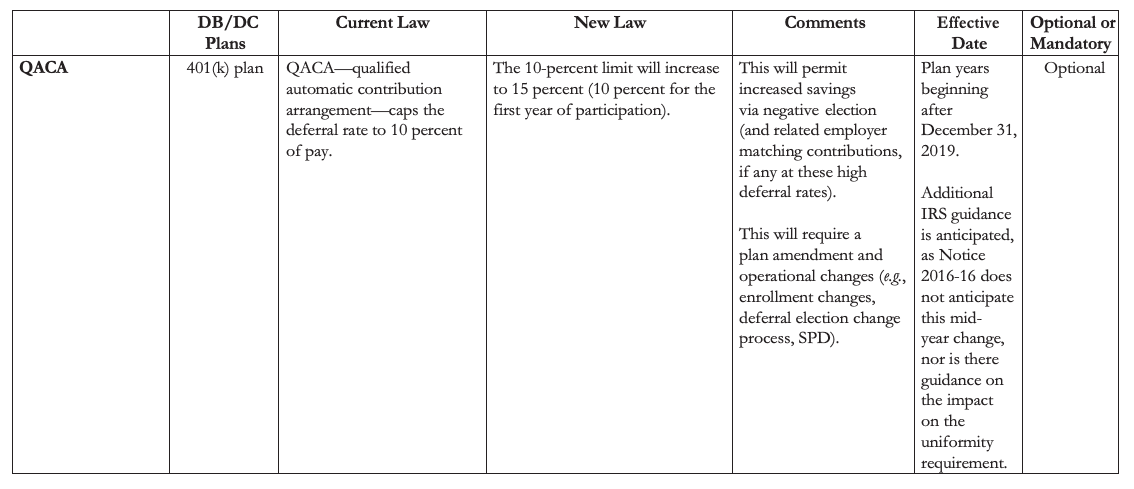


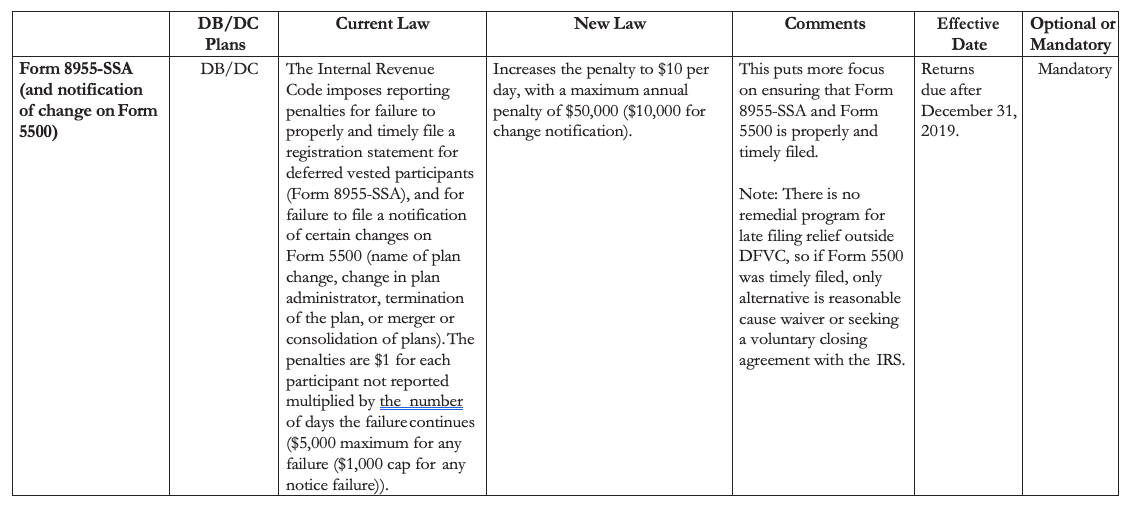
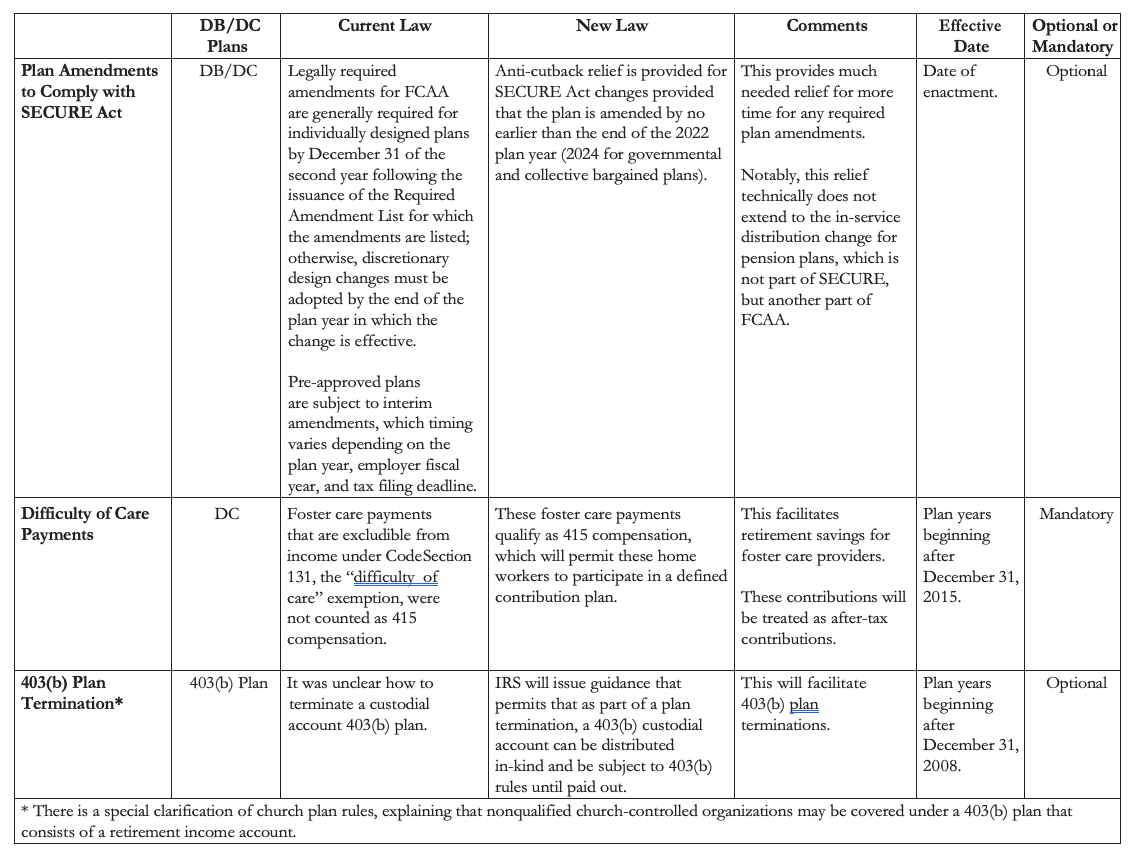
- Posted by chuckylose
- On April 10, 2020


